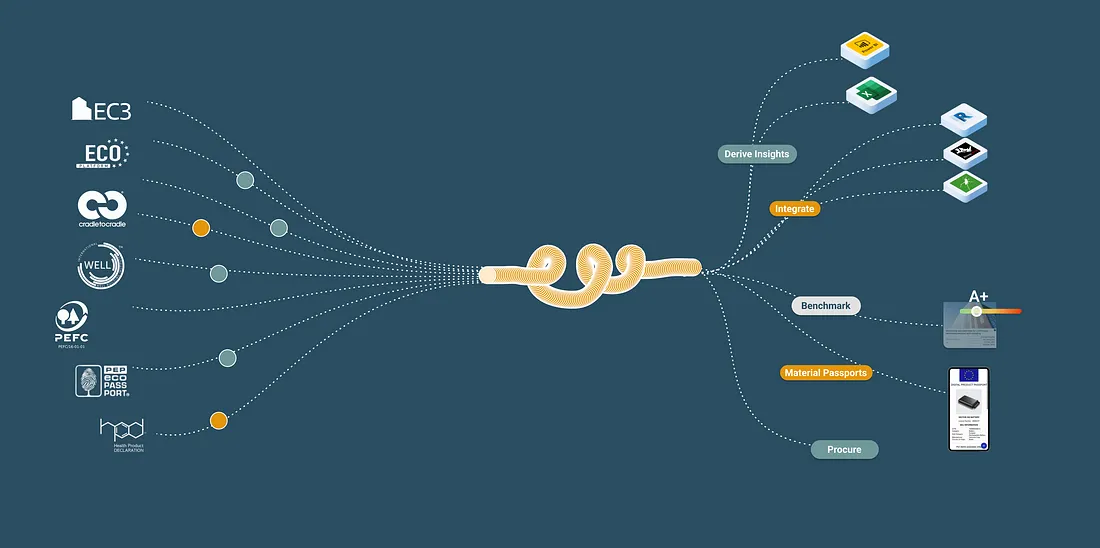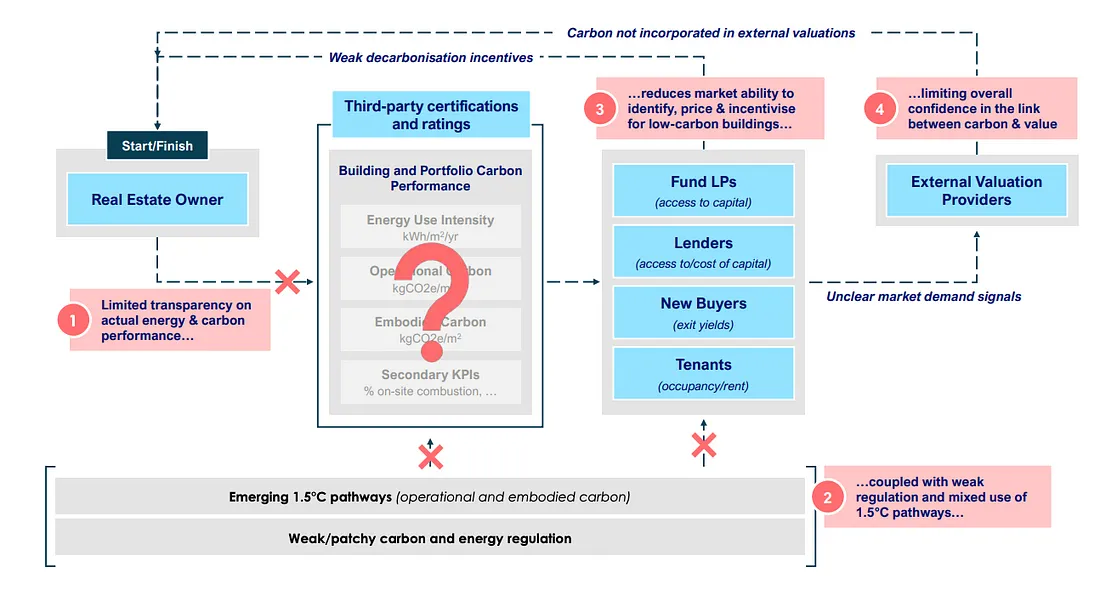Data in BIM from Day 1: How to Really Achieve Our Climate Targets
Introduction to BIM and Climate Goals
The Revolution of Building Information Modeling (BIM) in Construction
Building Information Modeling (BIM) has brought a paradigm shift in the construction industry. It’s not just about representing buildings anymore; it’s about gaining early insights into their performance. This transformation is crucial in today’s context, where climate change poses a significant challenge. By front-loading efforts during the design process and leveraging BIM, professionals can better control costs, reduce errors, and make more sustainable choices.

Designers’ digital “Sweet spot” for early-stage, data driven analysis (Matteo Orsi, 2023)
Aligning BIM with Climate Targets: A Strategic Overview
The alignment of BIM processes with climate targets is a strategic necessity. Adopting BIM from the early stages isn’t just about geometrical and spatial information; it’s about integrating data related to environmental impact, thereby aligning construction practices with broader climate goals.
The Role of Early-Stage Intelligence in BIM
The Importance of Early-Stage Data for CO2 Reduction
Early-stage intelligence in BIM is critical for driving CO2 reduction in building designs. The Royal Institute of British Architects (RIBA) 2030 Climate Challenge highlights this by emphasizing the need for designers to consider material quantities, carbon factors, and maintenance/end-of-life carbon assumptions from the outset.
The RIBA 2030 Climate Challenge: A Case Study
The RIBA 2030 Climate Challenge sets a benchmark for sustainable design, urging designers to focus on early-stage data to meet ambitious environmental targets. This challenge underscores the importance of integrating sustainable practices in the initial phases of design and construction.
The MacLeamy Curve: Smart BIM vs Traditional
Understanding the MacLeamy Curve

The MacLeamy Curve illustrates the value of early effort in the design process. This concept shows that by investing more in the early stages of design, significant cost savings and efficiency gains can be achieved, especially in the context of sustainable design.
Benefits of Smart BIM in Early Design Stages
Smart BIM, as opposed to traditional approaches, emphasizes the importance of early-stage data. This approach leads to better control over costs and a reduction in errors, making it a key component in sustainable building practices.
Material Quantities and Carbon Factors in BIM
Analyzing Material Quantities for Sustainable Design
Material quantity analysis in BIM is crucial for sustainable design. By understanding the material requirements early, designers can make informed decisions that align with environmental sustainability goals.
Integrating Carbon Factors into BIM
The integration of carbon factors into BIM models is a significant step towards achieving climate targets. This integration allows for a more comprehensive understanding of a building’s carbon footprint from the onset, enabling more environmentally friendly design choices.
Challenges of Sourcing Robust BIM Data
Overcoming Data Availability and Accuracy Issues
One of the main challenges in BIM is sourcing robust and publicly available datasets, particularly for embodied and operational carbon. Addressing these data availability and accuracy issues is essential for the effective use of BIM in sustainable construction.
Innovative Solutions for Data Sourcing in BIM
To address these challenges, innovative solutions are needed. These might include developing new data sources or finding novel ways to integrate existing data into BIM models.
Bridging Data Gaps for Effective BIM
Strategies for Closing Data Gaps in BIM
Closing data gaps in BIM requires a multi-faceted approach, including stakeholder engagement and the development of organizational strategies. This ensures that BIM models are as accurate and comprehensive as possible.
The Role of Stakeholders and Public Bodies in BIM Data
Stakeholders and public bodies play a crucial role in bridging data gaps in BIM. Their involvement can facilitate the development of open data sources and support initiatives like the Inventory of Carbon and Energy (ICE) and the 2050 Materials Database & API.
Low-tech/High-tech Approach in BIM
The Digital “Sweet Spot” for Early-Stage Analysis
There is a “sweet spot” in the early stages of a project where the use of digital tools can greatly enhance analysis and decision-making in BIM. This involves finding the right balance between low-tech and high-tech approaches to data integration.
Visual Scripting and Data Integration in BIM
Visual scripting tools like Dynamo or Grasshopper can play a key role in integrating data into BIM models. These tools provide a simple yet effective way to link databases with models, enhancing the decision-making process.
Integrating EC Data into BIM Materials Library
Benefits and Strategies for EC Data Integration
Integrating Embodied Carbon (EC) data into a BIM materials library has numerous benefits. It improves decision-making, is platform-agnostic, and allows for the adaptation of databases to organizational needs.
Scalability and Adaptability of EC Data in BIM
The integration process is scalable and adaptable, meaning that databases can be updated or expanded easily. This flexibility is crucial for organizations looking to stay ahead in sustainable design practices.
Concluding Thoughts on BIM and Climate Targets
Summarizing the Impact of Data-Driven BIM on Climate Goals
Data-driven approaches in BIM have a significant impact on meeting climate targets. By sourcing and integrating relevant data and bridging data gaps, organizations can enhance their decision-making processes and develop long-term strategies for better design outcomes.
Future Directions for BIM in Sustainable Building Design
The future of BIM in sustainable building design looks promising. As more organizations adopt these practices and technologies evolve, the construction industry can expect to see more innovative and environmentally friendly designs.
FAQs
- How does BIM contribute to achieving climate targets?
Building Information Modeling (BIM) contributes significantly to achieving climate targets by facilitating sustainable design and construction. It enables architects, engineers, and builders to simulate and analyze building performance, including energy consumption, carbon emissions, and resource efficiency, right from the initial design stages. By integrating data on materials, design choices, and building operations, BIM helps in making informed decisions that align with climate goals. - What is the importance of early-stage data in BIM?
Early-stage data in BIM is crucial because decisions made during the initial phases of design and construction have a long-lasting impact on a building’s environmental performance. Early incorporation of data related to energy efficiency, material sustainability, and lifecycle assessment helps in optimizing design for minimal environmental impact. This proactive approach ensures that sustainability is not an afterthought but a fundamental component of the building design process. - What are the challenges in sourcing robust BIM data?
Challenges in sourcing robust BIM data include the availability of accurate and comprehensive data, standardization of data formats, and integration of data from various sources. Another challenge is ensuring that the data reflects up-to-date environmental standards and construction practices. Overcoming these challenges requires collaborative efforts among industry stakeholders, investment in data research, and development of advanced data management tools. - How can data gaps in BIM be effectively bridged?
Bridging data gaps in BIM can be achieved through collaboration between industry stakeholders, including architects, engineers, material suppliers, and policymakers. Developing shared databases and adopting open data standards can facilitate the exchange of accurate and comprehensive information. Additionally, leveraging emerging technologies like AI and machine learning can help in generating predictive insights and filling in data gaps. - What role do stakeholders and public bodies play in BIM data?
Stakeholders and public bodies play a pivotal role in the development and standardization of BIM data. They can drive the creation of policies and regulations that mandate the use of sustainable materials and practices. Public bodies, in particular, can fund research into sustainable building technologies and facilitate the creation of public databases that provide access to reliable and standardized environmental data. - How does integrating EC data into BIM materials library benefit sustainable design?
Integrating Embodied Carbon (EC) data into a BIM materials library benefits sustainable design by providing detailed insights into the carbon footprint of different building materials. This allows architects and designers to make informed choices about materials that have lower carbon impacts, leading to more sustainable building designs. The integration of EC data enhances the ability to assess and reduce a building’s total environmental impact over its lifecycle.

Current versus ideal level of data needed for an early-stage, data-driven process (Matteo Orsi, 2023)
Conclusion
BIM’s integration of data from day one is a game-changer in the quest to achieve our climate targets. By harnessing the power of early-stage intelligence, the construction industry can make significant strides towards sustainable building design, ultimately contributing to a healthier planet.
How 2050 Materials Can Help in Achieving Climate Targets through BIM
2050 Materials plays a pivotal role in advancing the effectiveness of Building Information Modeling (BIM) for achieving climate targets. Its significance lies in its ability to bridge data gaps, crucial for informed decision-making in sustainable building design. The integration of Embodied Carbon (EC) data into BIM, facilitated by 2050 Materials, is a standout example of this.
Bridging Data Gaps with 2050 Materials
One of the major challenges in leveraging BIM for climate goals is the presence of data gaps, particularly in the early stages of design. These gaps can hinder the ability to make decisions that align with sustainability and carbon reduction targets. 2050 Materials addresses this by offering a platform for the integration of existing databases with additional data, thereby enhancing the robustness and comprehensiveness of BIM databases.
Scalability and Adaptability in Material Data
The process championed by 2050 Materials is not just about filling current gaps; it’s about creating a flexible and dynamic database that can evolve with changing needs and standards. This scalability and adaptability mean that as new materials are developed or as more data becomes available on existing materials (like U-values, acoustic performances, etc.), they can be seamlessly integrated into the BIM process. This continuous updating ensures that the most current and relevant data is always at the disposal of designers and builders.
Enhancing Decision-Making and Long-Term Strategies
The ultimate benefit of incorporating 2050 Materials into the BIM process is the enhancement of decision-making capabilities. By having access to more detailed and accurate data on materials, including their embodied energy and carbon, professionals in the building industry can make choices that significantly reduce the environmental impact of their projects. This not only helps in meeting immediate climate targets but also aids in developing long-term strategies that are in line with sustainability goals.
In conclusion, the integration of 2050 Materials into BIM practices offers a comprehensive solution to one of the key challenges in sustainable building design — the lack of robust and detailed data. By filling this gap, it empowers professionals to make informed, sustainable choices from the very beginning of the design process, thereby playing a crucial role in the journey towards achieving our climate targets.
Related articles

The Age of Integration — 10 Examples of Integrating Carbon Data in AEC, and Why They Matter
By integrating carbon data into the target-setting process, stakeholders can base their goals on real, actionable data, leading to more effective and sustainable project outcomes.
Read more
Net Zero is a Data Integration Problem
In recent years, numerous organizations in real estate and infrastructure have committed to ambitious net zero targets. This means reducing reliance on non-renewable energy and materials and adopting more sustainable design, engineering and procurement practices.
Read more
Tapping into the Low-Carbon Real Estate Market
This article is based on a paper by Leaders of the Urban Future (LOTUF) in partnership with Systemiq and highlights the required steps to decarbonizing in the real estate sector for a greener future.
Read more